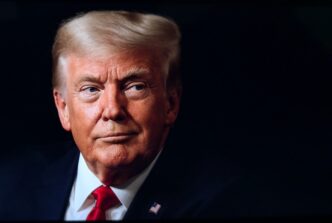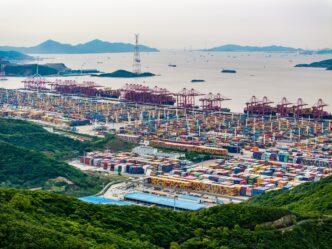KEY POINTS
President Donald Trump has authorized a 90-day extension to a critical tariff truce with China, pushing back the deadline for imposing higher duties on Chinese goods to November 10. The move, confirmed via an executive order just hours before the previous agreement was set to expire, provides negotiators from both economic superpowers with a new window to resolve a deep-seated trade dispute that has threatened global economic stability.
The Mechanics of the Truce Extension
The extension effectively places a temporary hold on the escalation of the trade conflict. For the United States, this means previously announced tariff hikes on a wide array of Chinese products will not take effect, offering a brief period of certainty for American businesses that rely on these goods.
In a parallel and coordinated action, China confirmed its commitment to the truce. According to a joint statement reported by the state-run Xinhua news agency following talks in Stockholm, Beijing will continue to suspend its own retaliatory tariff hikes for the same 90-day period. China will, however, maintain an existing 10-percent duty on certain U.S. products during this time.
Crucially, the agreement also includes a pledge from Beijing to address what the U.S. terms “non-tariff countermeasures.” These are subtle but significant barriers to trade, such as regulatory hurdles or licensing delays, that can be more damaging to commerce than direct taxes.
The High-Stakes Context of the U.S.-China Trade War
This truce is a pause in a much larger economic confrontation. The conflict began with the Trump administration’s efforts to address what it describes as long-standing unfair trade practices by China. The White House has consistently pointed to the “large and persistent annual U.S. goods trade deficits” as a primary justification for its aggressive tariff strategy.
In an executive order, the administration formally classified this trade imbalance as an “unusual and extraordinary threat to the national security and economy of the United States.” This classification provides the legal foundation for implementing broad tariffs outside of traditional trade dispute mechanisms.
The dispute quickly escalated into a tit-for-tat trade war, with both nations imposing progressively higher tariffs on hundreds of billions of dollars worth of goods. These levies snarled global supply chains, increased costs for manufacturers, and created significant uncertainty for businesses worldwide.
What Are the Key Issues on the Negotiating Table?
While the tariff numbers dominate headlines, the core of the negotiations revolves around fundamental aspects of China’s economic model. The 90-day extension is designed to give negotiators more time to find common ground on these complex issues.
Intellectual Property and Technology Transfer
A central complaint from the United States is the accusation of widespread intellectual property (IP) theft. U.S. officials allege that China has systematically engaged in or condoned the theft of trade secrets, patents, and copyrights from American firms. Furthermore, Washington aims to end policies that effectively force U.S. companies to transfer their proprietary technology to Chinese partners as a condition of accessing the vast Chinese market.
The Bilateral Trade Deficit
The trade deficit, which occurs when a country buys more goods from another country than it sells to it, is a key focus for President Trump. The administration argues that the massive and enduring deficit with China is evidence of an unbalanced and unfair trading relationship. The goal of the tariffs, from this perspective, is to make Chinese goods more expensive, encouraging American consumers and businesses to buy domestically or from other countries, thereby reducing the deficit.
Market Access and Non-Tariff Barriers
Beyond tariffs, the U.S. is pushing for greater market access for its companies in China. This includes demanding the removal of non-tariff barriers that hinder American businesses. These can range from discriminatory regulations and opaque licensing processes to providing preferential treatment and subsidies to domestic Chinese companies, creating an uneven playing field for foreign competitors.
Economic and Political Implications
This 90-day reprieve provides temporary relief but does not resolve the underlying uncertainty that has plagued businesses. Companies making long-term decisions about investments and supply chains still face the risk that negotiations could fail, leading to the sudden imposition of debilitating tariffs.
Politically, the extension allows both governments to continue dialogue without being seen as backing down. For President Trump, it demonstrates a willingness to negotiate while maintaining his administration’s hardline stance on trade. For Beijing, it provides time to manage domestic economic pressures while seeking a resolution that preserves its key development goals.
The outcome of these continued talks carries immense weight for the entire global economy. Another escalation would not only harm the U.S. and Chinese economies but could also trigger a broader slowdown in international trade and investment, impacting nations far beyond the primary conflict.
In conclusion, the 90-day tariff truce extension is a critical diplomatic maneuver that keeps the door open for a comprehensive trade agreement. While it temporarily calms markets and provides breathing room for negotiators, the fundamental and deeply complex disagreements between the world’s two largest economies remain unresolved. The progress made before the new November deadline will be a key determinant of global economic health for the foreseeable future.








